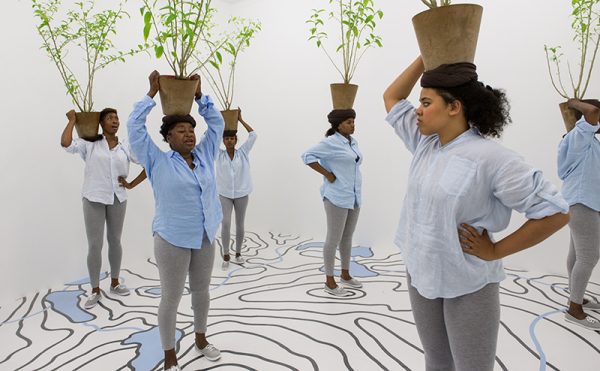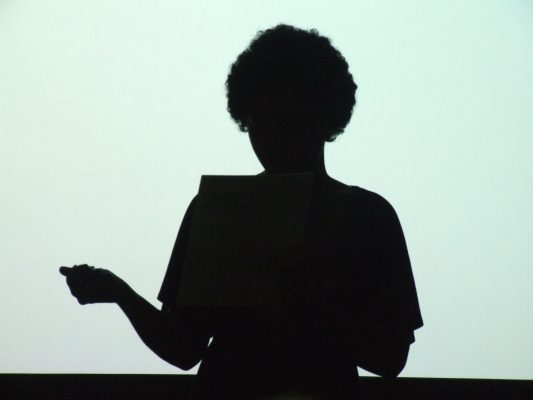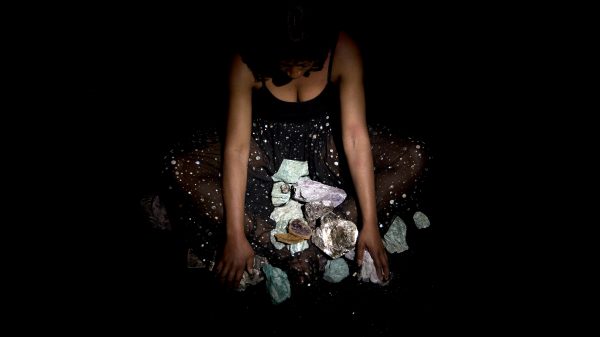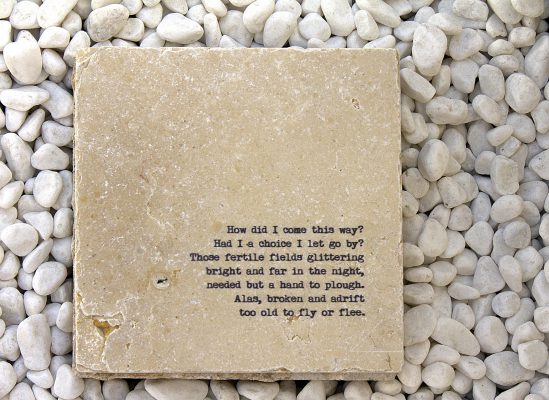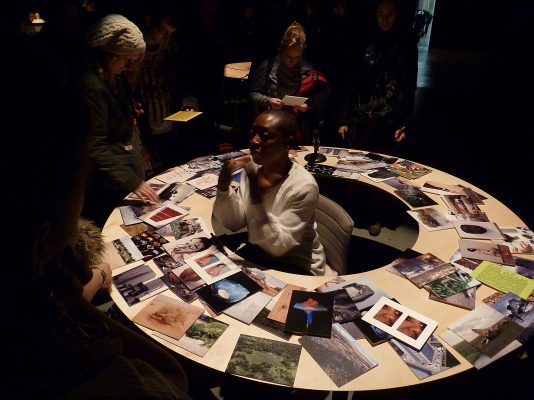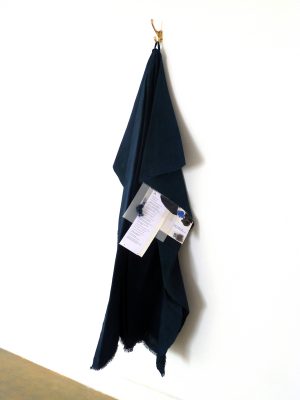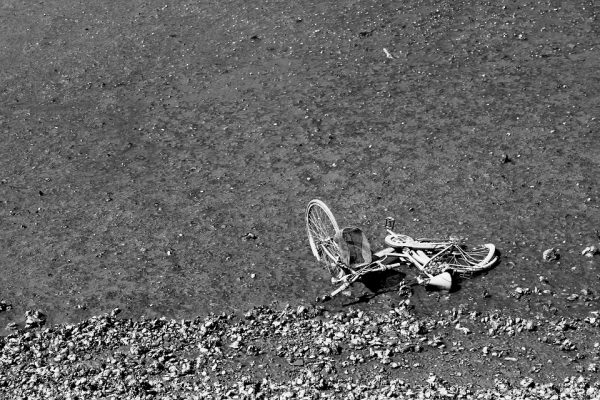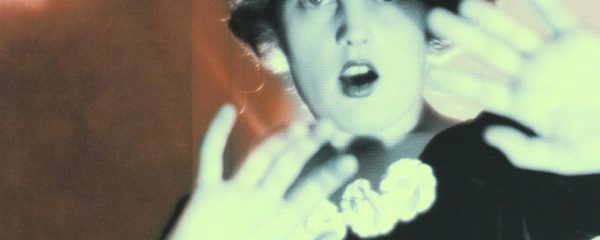Some things are meant to be lost. You can’t collect emotions. As the artist Otobong Nkanga tells me this, I imagine an elaborate array of emotions, all bottled up, lining a shelf: anger, love, confusion, happiness, hatred.
Nkanga’s practice is expansive and multifaceted, encompassing performance, painting, drawing, sculpture and installation. It is characterised by the artist’s will to explore and understand stories, narratives and histories—of landscape, nature and place—as mediated by the body. A complex web of information, action and conversation inspires diverse accounts and memories in the audience.
On my first experience of her work I entered Diaspore (2014) to encounter two women, plainly clothed, standing poised with a plant, Queen of the Night, tentatively balanced upon their heads. Navigating a drawing underfoot that resembled a map, the women’s movements were slow and considered, the rhythms of their bodies effected in the swaying of the plants above. Viewers mingled, sat, stood around the space, marking out their territory. I felt like an observer, absorbing the scene, but a friend described holding eye contact with one of the women for over half an hour: a battle of wills, a silent understanding?
Another earlier work, Face Me, I Face You (2013) sees three people standing closely together, physically connected by six pointed black wooden sticks. These crisscross between them, a layered zigzag suspended in space and held in place only by the tension between two bodies – audience participants then begin to expand this network of connectivity. Contained Measures of Shifting States (2012), conceived and commissioned by The Tanks, Tate Modern, also sought audience participation. Four separate round tables were placed in a darkened, spotlit room, each displaying four elements: liquid, ice, smoke and heat in a state of movement and shift. On a hollowed out table, 100 printed images showed ‘inspiration’ from the Tate’s own collection as well as pictures of landscapes, maps and scientific diagrams – in the table’s central orifice, the artist remained for nine hours without a break, engaging in discussions with the participants.
Born in Nigeria and now working in Antwerp, the artist, who studied at the Rijksakademie in Amsterdam, has shown at numerous high-profile institutions over the past few years including the Tate, KW Institute, Smithsonian and Stedelijk Museum, as well as the Sharjah, Benin and Shanghai Biennales. We discussed the sense of loss that is endemic to performance alongside the artist’s fascination with nature, identity, and more besides.
